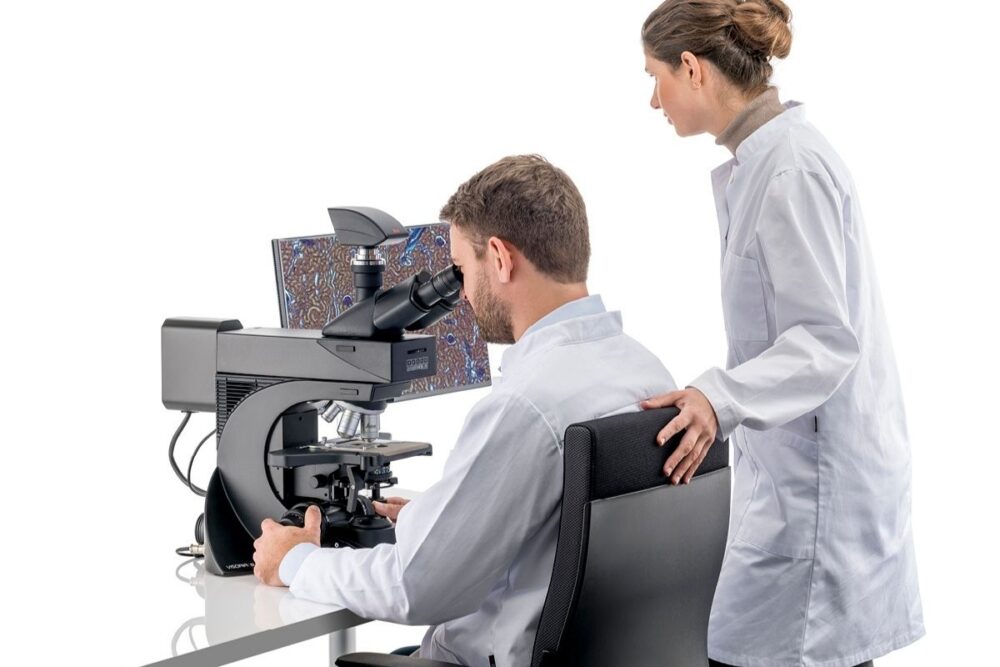Selecting the right clinical microscope is crucial for accurate and timely diagnoses in pathology. This guide explores key factors, from optical excellence and ergonomics to lab-specific needs, to help you make an informed decision.
Content provided by Leica Microsystems
Microscopes are an integral part of pathologists’ workflows. Especially in histopathology, hematopathology or medical microbiology, pathologists use microscopes to make their diagnosis efficiently and reliably. Thus, they often spend long working hours looking down the eyepieces and may suffer from physical discomfort due to their working posture.
If you are considering the purchase of new clinical microscopes for yourself or your team, you will think about many options, vendors, and microscope models. Here are some tips to help you come to the best buying decision, always bearing in mind that accuracy and time to diagnosis are the most important aspects in pathology. After all, to be helpful to the patient, a diagnosis must be both right and timely.
This article from Leica Microsystems outlines important factors when selecting clinical microscopes for pathology, emphasizing accuracy and timely diagnosis.
Key considerations include:
- Analyzing laboratory needs This involves identifying the types of specimens examined (e.g., tissue sections, fluids, microorganisms) to determine necessary contrast methods.
- Throughput of the lab Consider whether manual, semi-automated, or automated microscopes would be most efficient and ergonomic based on usage frequency.
- Number of users If multiple individuals share a microscope, ease of configuration is important for quick adaptation to different users.
- Teaching and discussion needs Multi-view microscopes and image-sharing features are valuable if the lab is involved in teaching or regular specimen discussions.
- Budget and acquisition timeline These factors will help guide the selection process.
For more details, you can refer to the full article on the Leica Microsystems website: Factors to Consider When Selecting Clinical Microscopes.









![Image [Buying Guide] How to Choose the Right Protection Gloves?](/wp-content/uploads/sites/3/Gloves-1-320x213.jpg)
